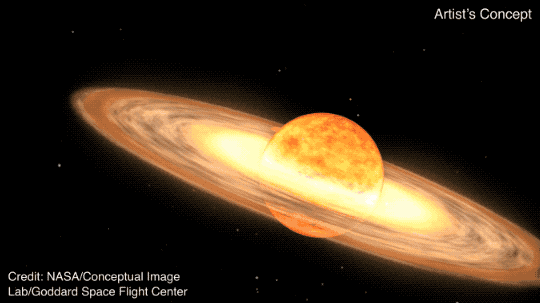Sky Watching Guide
How to Watch the Southern Delta Aquariids Meteor Shower
Though not as prolific as the Perseids, this annual spectacle is 'scientifically interesting' because its comet of origin remains a mystery
Two Massive Asteroids Will Fly Past Earth This Week. Here's What to Know
Within 42 hours of each other, the pair of large asteroids, which both have no chance of impacting our planet, will approach Earth as they orbit the sun
A 'Major Lunar Standstill' Is Happening This Year—and Friday's Full Moon Offers 'Dramatic' View
From now through much of next year, the moon will periodically rise and set at its most extreme points, thanks to a rare celestial phenomenon that only occurs every 18.6 years
These National Parks Are Hosting Astronomy Festivals in 2024
Get outside, ditch the light pollution and marvel at the cosmos on these protected public lands
Missed the Auroras in May? Here’s How to See Them Next Time
Three veteran aurora chasers and a NASA scientist share everything you need to know to check these dazzling displays off your bucket list
Missed the 'Parade of Planets'? These Upcoming Alignments Will Likely Be Better, Anyway
Astronomers tempered expectations of the celestial event this week, pointing to others in the near future as more exciting opportunities for sky watchers
See 12 Breathtaking Images of the Northern Lights, Spotted in Shocking Places Over the Weekend
A period of unusually strong solar activity meant the colorful aurora borealis could be seen much farther south than normal
How to Watch the Dazzling Eta Aquarid Meteor Shower, Bringing an Unusual 'Outburst' to Skies This Weekend
This year's spectacle will be more impressive than usual, as the Earth passes through a concentrated clump of 3,000-year-old comet debris
A Rare Nova Explosion Will Soon Bring a 'New Star' to the Night Sky—How to Catch a Glimpse
In an event that occurs only once every 80 years, a distant remnant of a star will grow much brighter, briefly becoming visible to Earth
How to Watch the Brilliant Lyrid Meteor Shower This Month
Fiery streaks will illuminate the night sky from April 15-29, with the spectacle's peak occurring from April 21-22
Watch the Total Solar Eclipse From Your Home With These Live Streams Online
Not in the path of totality? See the moon blot out the sun, revealing its magnificent corona, from your computer or phone
You Can See a Rare, Bright Comet This Month. Will It Be Visible During the Solar Eclipse?
Comet 12P/Pons-Brooks is a frigid, volcanic ice ball that won’t pass near Earth again until 2095
What It Takes to Complete the Ultimate Skywatching Endurance Challenge
The "Messier marathon" prompts space hobbyists to spot 110 celestial objects in one night, and the best time to try it is in March
How to Watch the Spectacular Total Solar Eclipse in April 2024
The moon will appear to completely block the sun's light across parts of Mexico, the United States and Canada on April 8—here's how to make the most of this rare celestial phenomenon
These 15 Photos Capture the Beauty of the Night Sky
Stars shine in these heavenly images from the Smithsonian Magazine Photo Contest
Nine Dazzling Celestial Events to Watch in 2024
Skywatchers can expect spectacular meteor showers, a comet soaring past Earth and a long-anticipated total solar eclipse
What to See in the Sky in January: Meteor Showers, Planets and Comets
From the Quadrantids to a "swarm of stars," here are the celestial spectacles you won’t want to miss this month
An Asteroid Will Eclipse a Red Star in the Constellation Orion Monday Night
In the U.S., the rare event will only be visible from southern Florida, but it will be livestreamed from Italy for viewers everywhere
How to Watch the Geminid Meteor Shower This Week
The celestial spectacle will peak on December 13 and 14, lighting up the night sky with as many as 120 shooting stars per hour
These 15 Photos Capture the Beauty of the Northern Lights
Spiking solar activity could mean more chances to see the awesome aurora borealis
Page 1 of 4
:focal(1500x871:1501x872)/https://tf-cmsv2-smithsonianmag-media.s3.amazonaws.com/filer_public/8a/bd/8abd6e51-d12a-44c5-915e-6c10520b20ed/gettyimages-1411415005.jpg)
:focal(1750x1083:1751x1084)/https://tf-cmsv2-smithsonianmag-media.s3.amazonaws.com/filer_public/90/df/90dfeb2c-1659-4b56-969c-9c4255f9c2f7/space_safety_programme_-_near_earth_objects.jpg)
:focal(1920x1280:1921x1281)/https://tf-cmsv2-smithsonianmag-media.s3.amazonaws.com/filer_public/05/91/059191fc-b3c1-406b-89c0-27f492723ceb/pexels-peter-de-vink-288978-975012.jpg)
:focal(1000x671:1001x672)/https://tf-cmsv2-smithsonianmag-media.s3.amazonaws.com/filer_public/30/c3/30c3cf9b-cc6f-4c33-888b-41af2a71fe2d/cf36e43e-596b-4104-a59e-9426cb826b92original.jpg)
:focal(360x240:361x241)/https://tf-cmsv2-smithsonianmag-media.s3.amazonaws.com/filer_public/47/ed/47ed2f31-f77b-4c3f-a20a-574bc1a8c214/sinha2_aurorasaurus_pho_20240411.jpg)
:focal(4000x2095:4001x2096)/https://tf-cmsv2-smithsonianmag-media.s3.amazonaws.com/filer_public/03/64/03647ce0-0203-473c-8ba1-c5cc4725de7e/gettyimages-182910299.jpg)
:focal(3842x2580:3843x2581)/https://tf-cmsv2-smithsonianmag-media.s3.amazonaws.com/filer_public/57/c0/57c0194a-54ac-4e05-b226-ed838e4a9bbd/gettyimages-2151911419.jpg)
:focal(512x341:513x342)/https://tf-cmsv2-smithsonianmag-media.s3.amazonaws.com/filer_public/68/38/68389cd5-7ba9-42f1-afb5-937a0bfd18ca/8711805373_c1221fe8a3_b.jpg)

:focal(4330x2887:4331x2888)/https://tf-cmsv2-smithsonianmag-media.s3.amazonaws.com/filer_public/10/0e/100e6843-676a-4707-b81e-79588851dda4/gettyimages-1220506373.jpg)
:focal(3072x2048:3073x2049)/https://tf-cmsv2-smithsonianmag-media.s3.amazonaws.com/filer_public/f2/d0/f2d06687-f8a6-4950-b6c5-8fd5f42e036e/36336061393_f5361c15f0_6k.jpg)
:focal(2190x1439:2191x1440)/https://tf-cmsv2-smithsonianmag-media.s3.amazonaws.com/filer_public/ec/e0/ece0719b-6ecc-417d-a3e3-7b1dfea815e1/pons_brooks.jpg)
:focal(1392x974:1393x975)/https://tf-cmsv2-smithsonianmag-media.s3.amazonaws.com/filer_public/bc/33/bc330d30-0d48-485d-89f9-e4f4d8867508/m51-and-companion_0-jpg.webp)
:focal(1536x1214:1537x1215)/https://tf-cmsv2-smithsonianmag-media.s3.amazonaws.com/filer_public/b6/bf/b6bf5fc7-b6c1-4d86-abb4-840cb48a9381/1dld.jpg)
:focal(1922x1290:1923x1291)/https://tf-cmsv2-smithsonianmag-media.s3.amazonaws.com/filer_public/1c/c8/1cc89df9-0275-4bc9-9aad-f015af51a714/1-e5e4b310-1873-4fc5-80f1-46b6a9ce8ad6.jpeg)
:focal(909x606:910x607)/https://tf-cmsv2-smithsonianmag-media.s3.amazonaws.com/filer_public/ae/88/ae882d3b-dbe8-4835-8b42-d1c76bfc5b5c/main_gettyimages-1739383451.jpg)
:focal(318x239:319x240)/https://tf-cmsv2-smithsonianmag-media.s3.amazonaws.com/filer_public/41/cb/41cbda7d-3d87-49d6-b5a0-5d3eab3a4e5e/quadrantid.jpg)
:focal(3360x2240:3361x2241)/https://tf-cmsv2-smithsonianmag-media.s3.amazonaws.com/filer_public/fa/bb/fabb68fc-ee63-480c-b7bb-b87f3a693545/gettyimages-1288681610.jpg)
:focal(1061x707:1062x708)/https://tf-cmsv2-smithsonianmag-media.s3.amazonaws.com/filer_public/94/fc/94fcd6f0-9806-4682-a9ff-225f5a675aea/gettyimages-894012038.jpg)
:focal(1488x1020:1489x1021)/https://tf-cmsv2-smithsonianmag-media.s3.amazonaws.com/filer_public/8f/f3/8ff3561d-c6de-441e-941d-41143c50580b/9-9def506d-f9dc-4e9c-8f68-e845af82acae.jpeg)